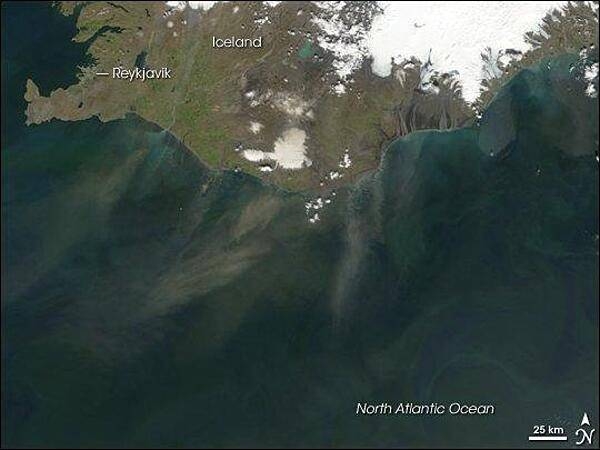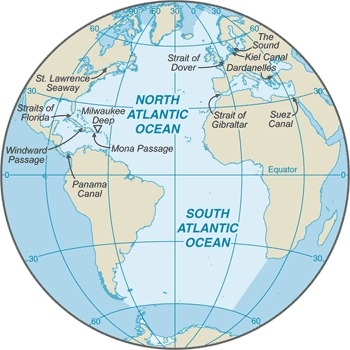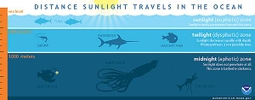Atlantic Ocean
Introduction
Background
The Atlantic Ocean is the second largest of the world's five oceans (after the Pacific Ocean, but larger than the Indian Ocean, Southern Ocean, and Arctic Ocean). The Kiel Canal (Germany), Oresund (Denmark-Sweden), Bosporus (Turkey), Strait of Gibraltar (Morocco-Spain), and the Saint Lawrence Seaway (Canada-US) are important strategic access waterways.The decision by the International Hydrographic Organization in the spring of 2000 to delimit a fifth world ocean, the Southern Ocean, removed the portion of the Atlantic Ocean south of 60 degrees south latitude.
Visit the Definitions and Notes page to view a description of each topic.
Geography
Location
body of water between Africa, Europe, the Arctic Ocean, the Americas, and the Southern Ocean
Geographic coordinates
0 00 N, 25 00 W
Map references
Political Map of the World
Area
total: 85.133 million sq km
note: includes Baltic Sea, Black Sea, Caribbean Sea, Davis Strait, Denmark Strait, part of the Drake Passage, Gulf of Mexico, Labrador Sea, Mediterranean Sea, North Sea, Norwegian Sea, almost all of the Scotia Sea, and other tributary water bodies
Area - comparative
about 7.5 times the size of the US
Coastline
111,866 km
Climate
tropical cyclones (hurricanes) develop off the coast of Africa near Cabo Verde and move westward into the Caribbean Sea; hurricanes can occur from May to December but are most frequent from August to November
Terrain
surface usually covered with sea ice in Labrador Sea, Denmark Strait, and coastal portions of the Baltic Sea from October to June; surface dominated by two large gyres (broad, circular systems of currents), one in the northern Atlantic and another in the southern Atlantic; the ocean floor is dominated by the Mid-Atlantic Ridge, a rugged north-south centerline for the entire Atlantic basin
major surface currents: clockwise North Atlantic Gyre consists of the northward flowing, warm Gulf Stream in the west, the eastward flowing North Atlantic Current in the north, the southward flowing cold Canary Current in the east, and the westward flowing North Equatorial Current in the south; the counterclockwise South Atlantic Gyre composed of the southward flowing warm Brazil Current in the west, the eastward flowing South Atlantic Current in the south, the northward flowing cold Benguela Current in the east, and the westward flowing South Equatorial Current in the north
Elevation
highest point: sea level
lowest point: Puerto Rico Trench -8,605 m
mean depth: -3,646 m
ocean zones: Composed of water and in a fluid state, the oceans are delimited differently than the solid continents. Oceans are divided into three zones based on depth and light level. Although some sea creatures depend on light to live, others can do without it. Sunlight entering the water may travel about 1,000 m into the oceans under the right conditions, but there is rarely any significant light beyond 200 m.
The upper 200 m (656 ft) of oceans is called the euphotic, or "sunlight," zone. This zone contains the vast majority of commercial fisheries and is home to many protected marine mammals and sea turtles. Only a small amount of light penetrates beyond this depth.
The zone between 200 m (656 ft) and 1,000 m (3,280 ft) is usually referred to as the "twilight" zone, but is officially the dysphotic zone. In this zone, the intensity of light rapidly dissipates as depth decreases. Such a minuscule amount of light penetrates beyond a depth of 200 m that photosynthesis is no longer possible.
The aphotic, or "midnight," zone exists in depths below 1,000 m (3,280 ft). Sunlight does not penetrate to these depths and the zone is bathed in darkness.
Natural resources
oil and gas fields, fish, marine mammals (seals and whales), sand and gravel aggregates, placer deposits, polymetallic nodules, precious stones
Natural hazards
icebergs common in Davis Strait, Denmark Strait, and the northwestern Atlantic Ocean from February to August and have been spotted as far south as Bermuda and the Madeira Islands; ships subject to superstructure icing in extreme northern Atlantic from October to May; persistent fog can be a maritime hazard from May to September; hurricanes (May to December)
Geography - note
major chokepoints include the Dardanelles, Strait of Gibraltar, access to the Panama and Suez Canals; strategic straits include the Strait of Dover, Straits of Florida, Mona Passage, The Sound (Oresund), and Windward Passage; the Equator divides the Atlantic Ocean into the North Atlantic Ocean and South Atlantic Ocean
Environment
Environment - current issues
endangered marine species include the manatee, seals, sea lions, turtles, and whales; unsustainable exploitation of fisheries (over fishing, bottom trawling, drift net fishing, discards, catch of non-target species); pollution (maritime transport, discharges, offshore drilling, oil spills); municipal sludge pollution off eastern US, southern Brazil, and eastern Argentina; oil pollution in Caribbean Sea, Gulf of Mexico, Lake Maracaibo, Mediterranean Sea, and North Sea; industrial waste and municipal sewage pollution in Baltic Sea, North Sea, and Mediterranean Sea
Marine fisheries
the Atlantic Ocean fisheries are the second most important in the world accounting for 26.4%, or 21,063,495 mt, of the global catch in 2019; of the seven regions delineated by the Food and Agriculture Organization in the Atlantic basin, the most important include the following:
Northeast Atlantic region (Region 27) is the fourth most important in the world producing 10.2% of the global catch or 8,116,507 mt in 2019; the region encompasses the waters north of 36º North latitude and east of 40º West longitude with the major producers including Norway (3,528,240 mt), Russia (1,044,153 mt), Iceland (933,019 mt), UK (823,669 mt), and Denmark (641,927 mt); the region includes the historically important fishing grounds of the North Sea, the Baltic Sea, and the Atlantic waters between Greenland, Iceland, and the British Isles; the principal catches include Atlantic cod, haddock, saithe (pollock), Blue Whiting, herring, and mackerel; not all fish caught are for human consumption, half of fish catches in the North Sea are processed as fish oil or fish meal, which are used in animal fodder
Eastern Central Atlantic region (Region 34) is the second most important Atlantic fishery, and sixth largest in the world producing more than 6.8% of the global catch or 5,397,726 mt in 2019; the region encompasses the waters between 36º North and 6º South latitude and east of 40º West longitude off the west coast of Africa with the major producers including Morocco (1,419,872 mt), Mauritania (705,850 mt), Senegal (472,571 mt), Nigeria (451,768 mt), Ghana (303,001 mt), Cameroon (265,969 mt), and Sierra Leone (200,000 mt); the principal catches include pilchard, sardinellas, shad, and mackerel
Northwest Atlantic region (Region 21) is the third most important Atlantic fishery and eighth in the world producing 2% of the global catch and 1,679,512 mt in 2019; it encompasses the waters north of 35º North latitude and west of 42º West longitude including the important fishing grounds over the continental shelf of North America such as the Grand Banks, the Georges Bank, and the Flemish Cap, as well as Baffin Bay with the major producers including the US (927,777 mt), Canada (615,651 mt), and Greenland (179,990 mt); the principal catches include sea scallops, prawns, lobster, herring, and menhaden
Mediterranean and Black Sea region (Region 37) is a minor fishing region representing 1.7% or 1,385,190 mt of the world’s total capture in 2019; the region encompasses all waters east of the Strait of Gibraltar with the major producers including Turkey (686,650 mt), Italy (281,212 mt), Tunisia (129,325 mt), Spain (119,759 mt), and Russia (72,279 mt); the principal catches include European anchovy, European pilchard, Gobies, and clams
Climate
tropical cyclones (hurricanes) develop off the coast of Africa near Cabo Verde and move westward into the Caribbean Sea; hurricanes can occur from May to December but are most frequent from August to November
Government
Country name
etymology: name derives from the Greek description of the waters beyond the Strait of Gibraltar, Atlantis thalassa, meaning "Sea of Atlas"
Economy
Economic overview
The Atlantic Ocean provides some of the world's most heavily trafficked sea routes, between and within the Eastern and Western Hemispheres. Other economic activity includes the exploitation of natural resources, e.g., fishing, dredging of aragonite sands (The Bahamas), and production of crude oil and natural gas (Caribbean Sea, Gulf of Mexico, and North Sea).
Transportation
Ports and terminals
major seaport(s): Alexandria (Egypt), Algiers (Algeria), Antwerp (Belgium), Barcelona (Spain), Buenos Aires (Argentina), Casablanca (Morocco), Colon (Panama), Copenhagen (Denmark), Dakar (Senegal), Gdansk (Poland), Hamburg (Germany), Helsinki (Finland), Las Palmas (Canary Islands, Spain), Le Havre (France), Lisbon (Portugal), London (UK), Marseille (France), Montevideo (Uruguay), Montreal (Canada), Naples (Italy), New Orleans (US), New York (US), Oran (Algeria), Oslo (Norway), Peiraiefs or Piraeus (Greece), Rio de Janeiro (Brazil), Rotterdam (Netherlands), Saint Petersburg (Russia), Stockholm (Sweden)
Transportation - note
Kiel Canal and Saint Lawrence Seaway are two important waterways; significant domestic commercial and recreational use of Intracoastal Waterway on central and south Atlantic seaboard and Gulf of Mexico coast of US; the International Maritime Bureau reports the territorial waters of littoral states and offshore Atlantic waters as high risk for piracy and armed robbery against ships, particularly in the Gulf of Guinea off West Africa; in 2014, 41 commercial vessels were attacked in the Gulf of Guinea with 5 hijacked and 144 crew members taken hostage; hijacked vessels are often disguised and cargoes stolen; crews have been robbed and stores or cargoes stolen
Military and Security
Maritime threats
the International Maritime Bureau reports the territorial and offshore waters in the Niger Delta and Gulf of Guinea remain a very high risk for piracy and armed robbery of ships; in 2020, there were 98 reported incidents of piracy and armed robbery at sea in the Gulf of Guinea region; although a 24% decrease from the total number of incidents in 2019, it included all three hijackings and 9 of 11 ships fired upon worldwide; while boarding and attempted boarding to steal valuables from ships and crews are the most common types of incidents, almost a third of all incidents involve a hijacking and/or kidnapping; in 2020, a record 130 crew members were kidnapped in 22 separate incidents in the Gulf of Guinea, representing 95% of kidnappings worldwide; approximately 51% of all incidents of piracy and armed robbery are taking place off Nigeria, which is a decrease from the 71% in 2019 and an indication pirates are traveling further to target vessels; Nigerian pirates are well armed and very aggressive, operating as far as 200 nm offshore; the Maritime Administration of the US Department of Transportation has issued a Maritime Advisory (2021-002 - Gulf of Guinea-Piracy/Armed Robbery/Kidnapping for Ransom) effective 9 January 2021, which states in part, "Piracy, armed robbery, and kidnapping for ransom continue to serve as significant threats to US-flagged vessels transiting or operating in the Gulf of Guinea.”
Transnational Issues
Disputes - international
some maritime disputes (see littoral states)


